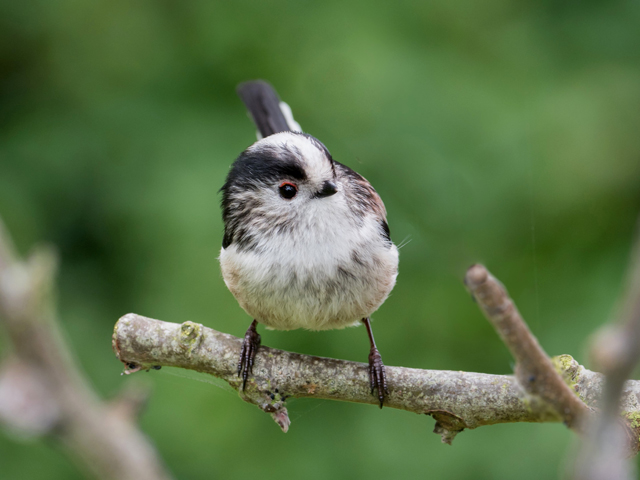An absolutely ripping day to be out and about around the island with bags of visible migration, a decent rarity and a nice selection of island scarcities...oh, and good dragonflies to boot. Once again, the weather forecast was well wide of the mark and although a dreary gloom continued to envelope the island through the morning, by the afternoon blazing sun had broken through and it was feeling positively hot. The rarity of the day was the autumn's second
Radde's Warbler that showed up off Bumpers Lane, but a nice supporting cast included at least 8
Bearded Tits, 7
Hawfinches and a
Siberian Chiffchaff at the Bill, 2
Yellow-browed Warblers and 3
Hawfinches dotted around Southwell and a
Siberian Chiffchaff at Bumpers Lane. Overhead passage accounted for the bulk of the numbers, with a strong southbound passage over the Bill that included 1700
Wood Pigeons, 1000 each of
Linnet and
Goldfinch, 450
Chaffinches, 150
Skylarks, 110
Siskins, 100
Reed Buntings, 25
Greenfinches, 12
Bramblings, 8
Redpolls and 3
Merlins. It was considerably quieter on the ground although there were again several decent concentrations of
Chiffchaffs in particular in areas of cover; the
Firecrest tally at the Bill crept back up into double figures, with 3
Bullfinches, 2
Black Redstarts and a
Great Spotted Woodpecker of note there, whilst elsewhere 2
Ring Ouzels were at Kingbarrow Quarry. The sea got very little attention but 4
Great Skuas and an
Arctic Tern did make the list at the Bill; the very long staying
Eider was also still in Portland Harbour.
In the insect line,
Vagrant Emperor dragonflies at Bumpers Lane (a female) and Shepherd's Dinner (a male) were a fine highlight; additionally, there were inconclusive brief sightings of large dragonflies presumed to Vagrant Emperors at Wallsend and Southwell Business Park. In the afternoon sunshine a good deal of butterfly emigration was evident, with a steady southbound procession of
Red Admirals everywhere and 2
Clouded Yellows through south at the Bill. It had remained very windy overnight and immigrant moth interest didn't get beyond the level of singles of
Convolvulus Hawkmoth and
Cosmopolitan trapped by visitors at Freshwater Bay.
Seven of Portland's ten previous Radde's Warblers have been first found in a mist-net so today's Bumpers Lane bird was a nice in-field discovery © Joe Stockwell:

The Bearded Tits did their usual Portland thing of dropping into unlikely habitat...

...although it wasn't long before they moved into one of the maize strips - our nearest reedbed equivalent - where six of them were duly trapped; five of the six were metal- and colour-ringed and we understand they originate from RSPB Radipole (as did also the ringed bird we controlled earlier in the month) © Martin Cade:

Black Redstarts have been a bit slow to get going this month but are beginning to become a feature around the Bill tip © Mark Eggleton:

It was a source of some frustration that not one of the series of Vagrant Emperor sightings back in the early spring was supported by a photograph so it very pleasing that both of today's insects obliged; the male at Shepherd's Dinner stayed just long enough for both settled and flying images:

...although the Bumpers Lane female was less obliging © Joe Stockwell:

And finally, back to gulls again. We were interested to see the difference in state of moult between our 'black-and-white' Lesser Black-backed Gull from a couple of days ago and the next two intermedius that we had a look at below Culverwell: both these were far more advanced and already had streaky winter heads and plenty of newly moulted primaries © Martin Cade:























































